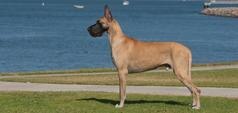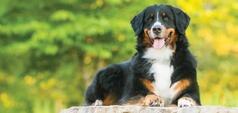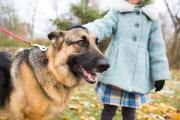
Optimizing Breeding Success: Understanding the Signs of a Heat Cycle & When to Breed

Regardless of whether you're an experienced dog breeder or new to the field, it's common knowledge that female dogs can only be bred during their heat cycle. However, many breeders may not be aware that individual variations in the timing of a female dog's reproductive cycle can disrupt the breeding schedule and lead to difficulties in conception.
Female dogs typically experience two heat cycles per year, with each cycle occurring approximately six to seven months apart and lasting around two to three weeks. The estrous cycle consists of four phases: proestrus, estrus, diestrus, and anestrus. Breeders are most familiar with the proestrus and estrus phases, as this is when a female dog exhibits swelling, bleeding, and attracts the attention of male dogs.
“Not all females have a regular cycle,” explains Cheryl Lopate, MS, DVM, DACT, a board-certified small-animal reproduction specialist at Reproductive Revolutions in Wilsonville, Oregon. “Sometimes there is little bleeding or swelling in the first days of proestrus, making it easy for a breeder to miss the signs, or sometimes a female dog’s proestrus is shorter than normal. Both could affect the ability to determine the beginning of the fertile period.”
“On the other hand, some female dogs may have a prolonged proestrus or prolonged estrus that lasts up to three to four weeks. Breeding these females too early will result in failure to conceive.”
In contrast, “some female dogs have a prolonged anestrus, in which they fail to enter estrus at all,” she says. “This can be caused by many things, including prior spay, delayed puberty, parasites, nutrition, ovarian hypoplasia, immune-mediated ovarian inflammation and progesterone-secreting cysts. It also may be caused by silent heat or failure of a novice breeder to notice a heat cycle because the female is fastidiously clean or not bleeding much.”
Hormonal changes play a crucial role in the reproductive process of female dogs. Progesterone, a reproductive hormone, increases in the bloodstream prior to ovulation. This rise in progesterone is triggered by the release of luteinizing hormone from the pituitary gland, starting with lower amounts and eventually surging to induce ovulation.
Correct timing is crucial for successful breeding, and progesterone testing plays a vital role in determining the optimal time to breed a female dog. By monitoring progesterone levels, breeders can pinpoint the moment of ovulation when the eggs are released from the follicles. This knowledge helps identify the fertile window, maximizing the chances of pregnancy and ensuring the possibility of a full-size litter. Additionally, accurate due dates can be calculated based on this information.
The fertile period in female dogs is during the estrus phase. Before estrus is the proestrus phase, which typically lasts around nine days and serves as a signal for the start of the heat cycle. During proestrus, the female dog experiences a blood-tinged vaginal discharge, along with an enlarged and swollen vulva. As estrus begins, the bloody discharge gradually decreases, transitioning to a pink or straw-colored discharge that eventually becomes watery. Throughout this period, the vulva remains swollen.
“The luteinizing hormone surge happens at the end of proestrus, and then estrus occurs for seven to nine days,” Dr. Lopate says. “The fertile period is the last four to five days of estrus.”
Although a female dog is not typically receptive to breeding during proestrus, this changes during estrus. Her receptive, passive behavior during estrus encourages males to mate.
Receptive behavior, however, is not a rule of thumb on when to breed all female dogs.
“Breeding based on receptive behavior or a set day of the cycle may result in breeding outside the female dog’s fertile period,” Dr. Lopate says. “It also may result in decreased litter size or failure to conceive. Receptive behavior is a result of the change in the estrogen to progesterone ratio and doesn’t always correlate with ovulation.”
“At the very end of estrus, or day one of diestrus, the cervix will close to sperm, so natural breeding or vaginal artificial insemination will not result in pregnancy,” Dr. Lopate says. “However, surgical artificial insemination or transcervical insemination in which the sperm goes directly into the uterus by-passing the cervix will allow eggs to be fertilized for another two to three days.”
After successful breeding, a female dog enters the diestrus stage, which lasts for approximately two months and corresponds to pregnancy. Whelping, or the birth of puppies, typically occurs around 64 to 66 days after the surge of luteinizing hormone that triggered ovulation. Following diestrus, the reproductive cycle enters the anestrus stage, characterized by a lack of significant hormonal activity.
“The period of anestrus is important for the uterine epithelium to recover from the prolonged hormone exposure that occurs during estrus and diestrus,” Dr. Lopate says. “If this period is too short, the endometrium, or lining of the uterus, may not be compatible with embryo survival.”
While the average interestrous interval, the period from ovulation to ovulation, is relatively consistent among dogs, it's important to note that some dogs may have shorter intervals that deviate from the norm. However, this variation does not necessarily hinder their reproductive ability.
“A few breeds, such as Akitas, Basset Hounds, Cocker Spaniels, Labrador Retrievers and Rottweilers, tend to have shorter interestrous intervals with normal fertility,” Dr. Lopate says. “Some breeds, such as Basenjis and Tibetan Mastiffs, cycle only one time a year.”
“We know that some female dogs can conceive with a short interestrous interval, but others cannot. If the interestrous interval is under four months, less than 30 percent of female dogs will conceive, yet if the interval is over five months, over 70 percent will conceive. In some cases, a short interestrous interval can be treated by medications to suppress estrus and provide a normal interval.”
Understanding the signs of a heat cycle and the stages of the female reproductive cycle is crucial for effective breeding management. This knowledge enables breeders to identify the optimal time for breeding, increasing the chances of successful conception and the birth of healthy litters of puppies.
The Role of Nutrition in Breeding
Optimal nutrition management plays a vital role in achieving reproductive efficiency in dog breeding. Breeders are advised to prioritize proper nutrition for female dogs before mating, as it is crucial for ensuring a successful pregnancy and facilitating a smooth whelping process.
Proper nutrition management is crucial during pregnancy as inadequate nutrition, whether due to deficiencies or excesses, can have detrimental effects. Research has shown that insufficient or imbalanced nutrition can negatively impact the fertilization rate and the number of fetuses.
“It is important to feed reproducing female dogs a highly digestible food that has at least 24 to 26 percent protein and at least 16 percent fat,” says Arleigh Reynolds, DVM, PhD, DACVN, Purina Senior Research Nutritionist, a board-certified veterinary nutritionist. “A complete and balanced food that is approved for all life stages or a puppy food that has nutrients to support females through growth and development will provide the nutrition needed during pregnancy and whelping.”
“If you switch from a lower protein and fat maintenance diet prior to breeding, there is a lag time of two to three months to get the full benefit of the diet. Besides the nutritional benefits of feeding a higher protein and fat food year-round, you can adjust the amount of food fed based on a dog’s body condition and metabolic energy needs.”
Purina® Pro Plan® is the #1 brand most fed and recommended brand by dog breeders in Canada.* Learn more about the what the Pro Club Breeder program has to offer, including up to 25% savings on Pro Plan dog and puppy food, a free bag of puppy food for your new pet owners and more!
*Canadian Dog Fancier survey results, November 2023
Related articles


